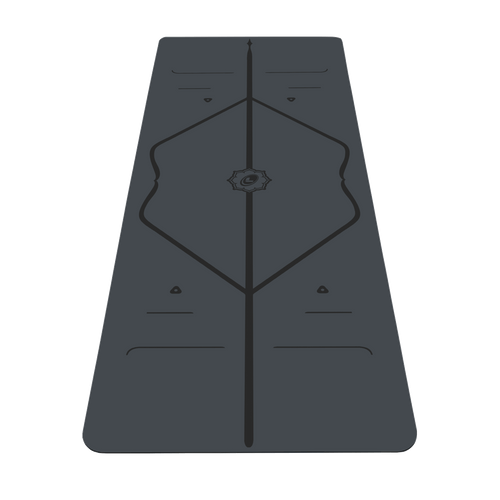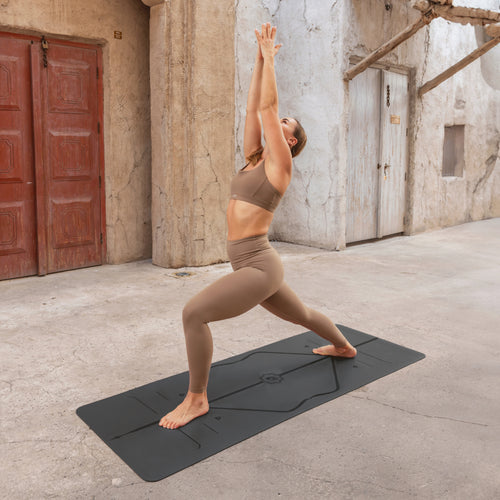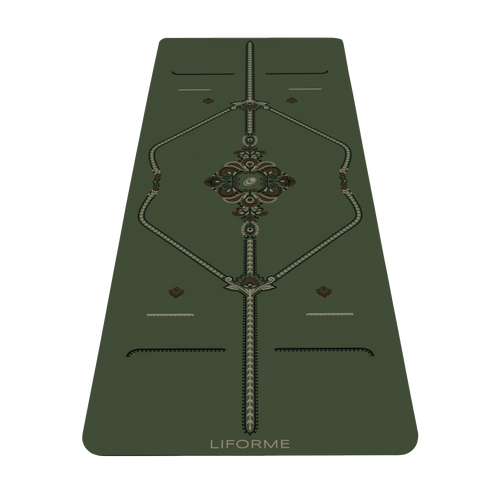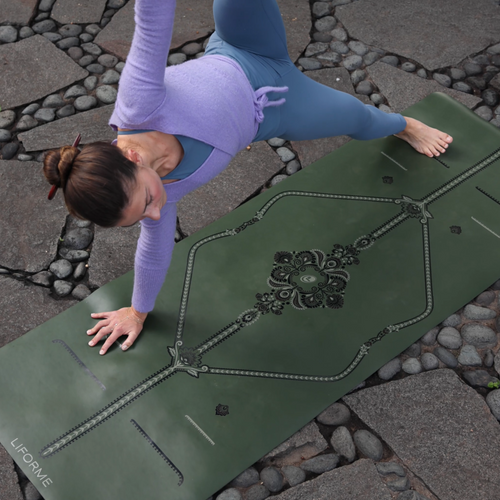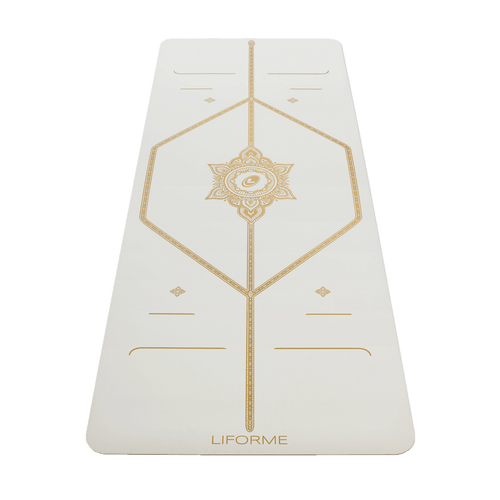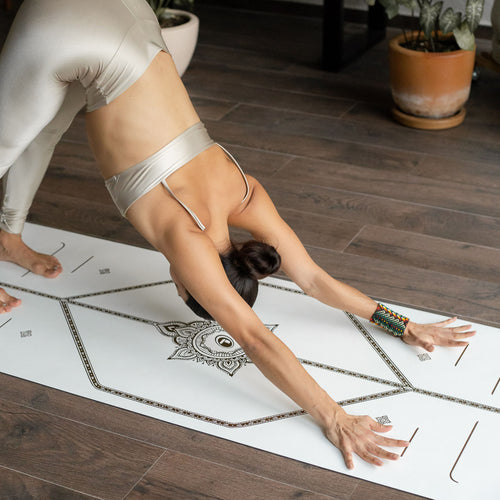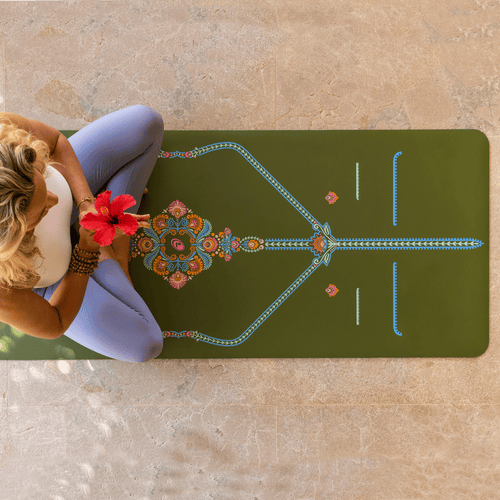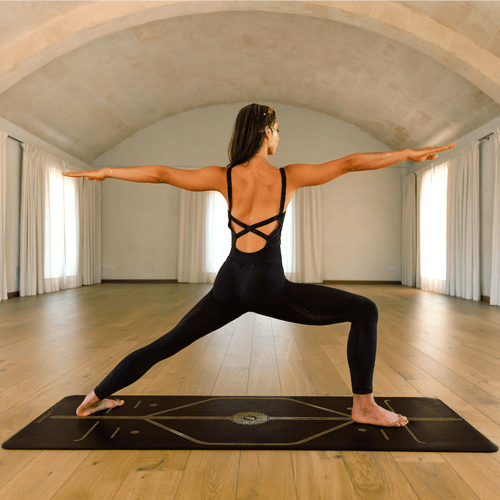How much do we love to hear the words ‘Take a moment in Child’s Pose’ mid-yoga class? It’s always welcome when the instructor cues it, but it’s even better when you realize you can drop into Balasana Pose whenever needed. Choosing to rest in Child’s Pose is a true power move, an expression of your commitment to self-care, and a mark of an advanced yoga practice.
Balasana is a warm hug of a pose. Technique isn’t really the main focus here, but a few small adjustments can make Child’s Pose more comfortable and effective. If your hips feel tight or your lower back is sensitive, simple modifications can help you find more ease and support in the posture.

Step-by-Step Instructions for Child’s Pose
- Come to an all-fours position (tabletop) with the tops of your feet resting on the floor.
- Open your knees wide towards the edges of your mat while keeping your feet together, big toes touching.
- Sink your hips back toward your heels.
- Lower your forehead to the mat or rest one cheek on the floor. Switch sides after a few breaths to keep things balanced.
- Extend your arms forward to stretch the shoulders and upper back. Alternatively, rest your arms by your sides, palms facing up.
- Stay for as many breaths as you need before coming back up to face new challenges.
Yogi’s Tip:
When I first started yoga, I definitely did not have the confidence to take Child’s Pose unless the teacher cued it. It really is a significant step on the path of always listening to your body above any other voices, internal or external. I encourage you to feel empowered to take rest when you need it, on and off your yoga mat.
Child’s Pose (Balasana) Basics
- Sanskrit Meaning: Bala (Child) Asana (Pose)
- Yoga Level: Beginner
- Pose Type: Restorative, Forward Fold
- Pose Benefits: Stretches the hips, thighs, shins, shoulders, and back
- Pose Category: Seated Poses, Hip Openers

Benefits of Child’s Pose (Balasana)
- Gently stretches your lower back
- Releases tension in the hips and thighs
- Calms the mind and nervous system
- Promotes conscious breathing
- Supports digestion through gentle abdominal compression
- Encourages a sense of safety and grounding
Child’s Pose Variations & Modifications
If Balasana isn’t comfortable, here are a few modifications to try:
- If your lower back is sensitive, keep your knees together rather than taking them wide to provide more support and reduce strain.
- If your hips feel tight, try adjusting your knee position to find a comfortable stretch. To improve mobility over time, incorporate hip-opening exercises in your practice.
- If you need extra support, place a bolster between your thighs or under your torso and head for a more restorative version of the pose.
- If you can’t get comfortable at all or if you’re not feeling fully relaxed, try an upright seated posture instead, either kneeling on your heels or sitting cross-legged.
- Child’s Pose is a really nice place to do some gentle side stretching as well. Just walk your arms over to one side of your mat while keeping both hips resting equally on your heels. Stay for several breaths, and then walk your arms over to the other side and do the same.
Balasana is both a gentle stretch and a gentle reminder that rest is just as important as movement in yoga. Find the variation that works for you, and you will truly enjoy the grounding and calming benefits it offers.
How can I incorporate Child’s Pose into my practice?
You can use Child’s Pose whenever you need a moment of rest. It’s great as a warm-up to gently stretch the spine and hips, a reset between challenging poses, or a cool-down to release tension.
It’s also helpful before bed to relax the nervous system or in the morning to ease into movement. However, it’s best to avoid it right after eating, as the forward fold may feel uncomfortable.
Is Child’s Pose safe during pregnancy?
Yes, with modifications, it can really help relieve lower back tension and promote relaxation. Widen your knees to make space for your belly and use a bolster, yoga ball, or blanket for extra support.
Avoid deep forward folds that press on your abdomen, and always listen to your body. If unsure, check with your healthcare provider or GP before practising.
How long should I hold Child’s Pose?
For a quick rest, hold 5-10 breaths, focusing on slow, steady breathing. If you’re using it for stress relief or deep relaxation, stay as long as it feels good.
Explore some beginner-friendly breathwork techniques to support your practice and make Child’s Pose even more calming.








